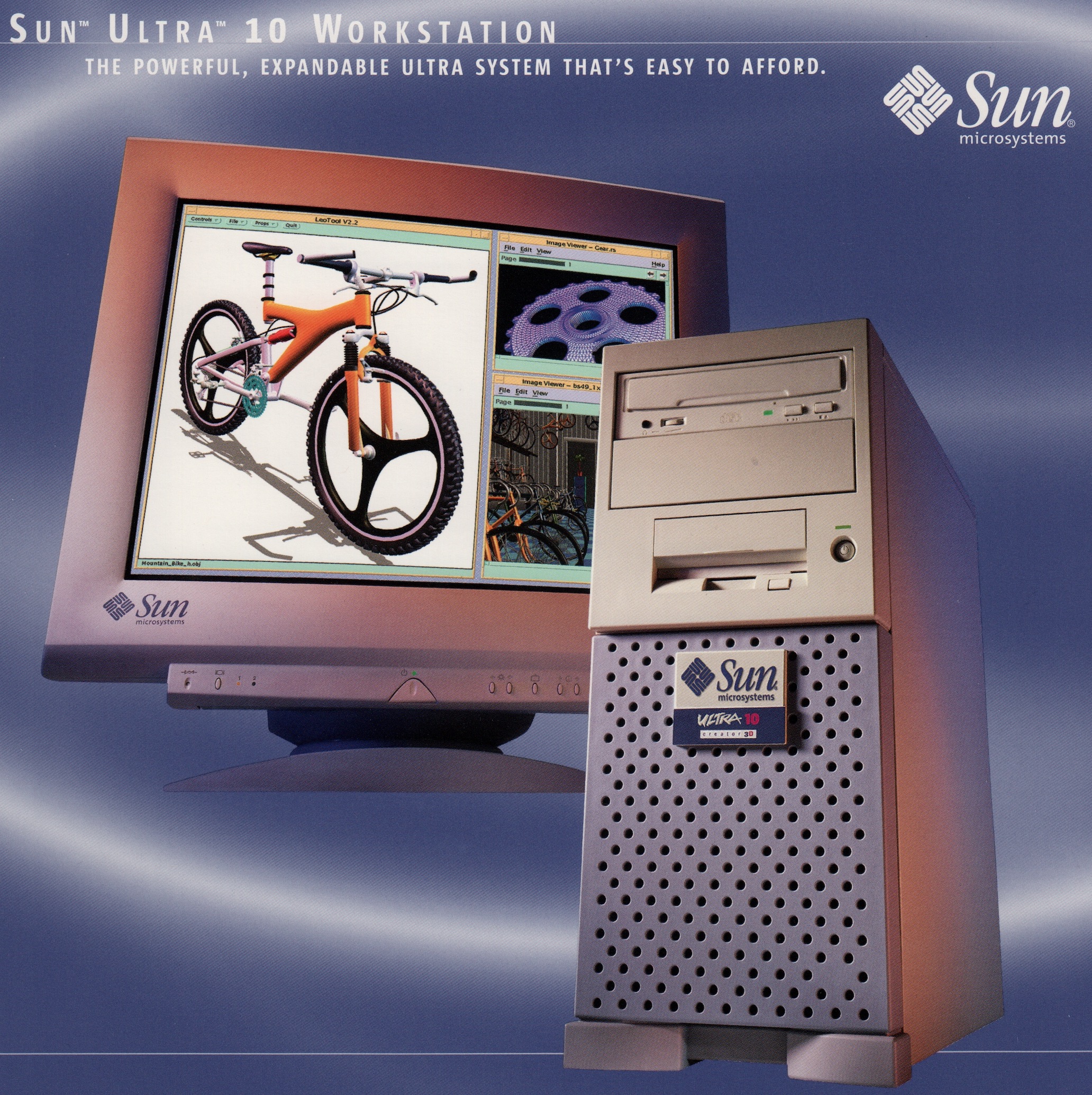Sun Ultra 10
Gallery

Image taken from product brochure - ©Sun
Technical Specifications
| Model: | Sun Ultra 10 |
|---|---|
| Codename: Platform: |
Sea Lion (A22) sun4u |
| Processor: Math Copro: |
UltraSPARC IIi (in CPU) |
| Clock Speed: | 300, 333, 360, 440MHz |
| RAM: | |
| Graphics: | |
| Operating System: | |
| Introduced: | January 1998 |
| Dealer price (net): |
Upgrades:
- Creator 3D Graphics
- 360MHz CPU
The Sun Ultra 10: A Cost-Effective UltraSPARC Workstation
Released in January 1998 alongside the Ultra 5, the Sun Ultra 10 (codenamed "Sea Lion") was another key system in Sun Microsystems' strategy to make the 64-bit UltraSPARC architecture more accessible. Positioned slightly above the Ultra 5, the Ultra 10 offered a balance of affordability and enhanced expandability in a mini-tower form factor.
The Ultra 10 was powered by the same UltraSPARC IIi processor as the Ultra 5, with CPU speeds ranging from 300 MHz up to 440 MHz. While it shared the cost-saving measure of using IDE hard drives, the Ultra 10 provided more internal expansion options. It featured four PCI slots and, significantly, a UPA slot, allowing users to install high-performance graphics cards like the Creator or Elite3D series, which were not possible in the Ultra 5.
This combination of a more affordable processor, PC-style components, and enhanced expandability made the Ultra 10 a popular choice for users who needed more performance and flexibility than the Ultra 5 offered but didn't require the full power or cost of the higher-end Ultra 60 or Ultra 80 workstations. It was widely used in software development, web serving, and various technical applications. Running the 64-bit Solaris operating system, the Ultra 10 benefited from the stability and robustness of the Solaris environment. Its mini-tower case provided more room for drives and expansion cards compared to the Ultra 5's desktop chassis.
The Sun Ultra 10 is remembered as a successful and versatile workstation that effectively bridged the gap between the entry-level Ultra 5 and the higher-performance UltraSPARC systems. Its blend of affordability, expandability, and 64-bit power made it a staple in many technical and enterprise environments during the late 1990s and early 2000s.